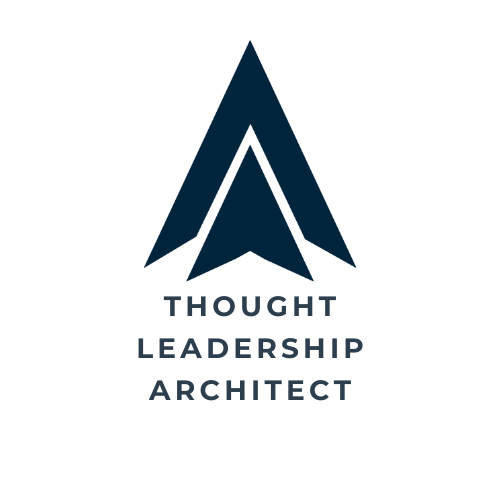Your cart is currently empty!
Are you ready to take off, and soar into success? For the modern leader, standing out is no longer optional—it’s essential. Whether you’re an entrepreneur, executive, or consultant, you’ve likely heard about the importance of personal branding and thought leadership. But what’s the difference between the two? And more importantly, how do you balance both to build an authoritative presence?
Many professionals confuse personal branding with thought leadership, assuming they are interchangeable. However, while they are connected, they serve different purposes.
As marketing strategist Dorie Clark explains:
“Personal branding is about making sure people know who you are. Thought leadership is about making sure they know what you think.”
Let’s break down these concepts and explore how you can leverage both to establish long-term credibility in your industry.
What is Personal Branding?
Your Reputation, Your Identity
At its core, personal branding is about how you present yourself to the world. It’s your unique identity, values, and messaging that define how people perceive you—both online and offline.
✔ Who you are (your story, background, and personality)
✔ What you do (your skills, expertise, and industry)
✔ Why it matters (your mission and value proposition)
💡 Example: Oprah Winfrey has an incredibly strong personal brand—people recognize her for authentic storytelling, emotional intelligence, and empowerment.
How to Build a Strong Personal Brand
✅ Clarify Your Niche & Expertise – What do you want to be known for?
✅ Maintain Consistency Across Platforms – Your LinkedIn, website, and social media should tell a cohesive story.
✅ Engage with Your Audience – Reply to comments, network, and share insights regularly.
📌 Best For: Professionals looking to establish recognition, credibility, and visibility in their industry.

What is Thought Leadership?
Your Ideas, Your Influence
If personal branding is about who you are, then thought leadership is about what you contribute to your industry. Thought leaders go beyond self-promotion—they drive conversations, challenge norms, and provide valuable insights.
✔ Thought leadership is about positioning yourself as an expert by sharing deep, industry-specific knowledge.
✔ It focuses on ideas, innovation, and influence rather than just visibility.
✔ It attracts opportunities like speaking engagements, consulting, and media coverage.
💡 Example: Simon Sinek is a true thought leader in leadership and business strategy—his TED Talk on Start With Why changed how people think about motivation and purpose.
How to Establish Thought Leadership
✅ Publish High-Value Content – Write articles, whitepapers, or research studies.
✅ Speak at Conferences & Webinars – Engage in public speaking to share your expertise.
✅ Leverage LinkedIn & Industry Platforms – Contribute thought-provoking discussions and insights.
📌 Best For: Professionals looking to influence industry trends, shape conversations, and build long-term authority.

Personal Branding vs. Thought Leadership: Key Differences
| Aspect | Personal Branding | Thought Leadership |
|---|---|---|
| Focus | Who you are & your reputation | What you think & contribute |
| Goal | Recognition & visibility | Influence & authority |
| Content Type | Social media, storytelling | Research, insights, analysis |
| Best Platform | LinkedIn, Instagram, YouTube | LinkedIn, blogs, industry talks |
| Primary Outcome | Builds credibility & trust | Shapes industry conversations |
💡 Smart professionals balance both. Your personal brand attracts attention, while thought leadership establishes long-term impact.
How to Combine Personal Branding & Thought Leadership for Maximum Impact
1. Define Your Unique Perspective
What sets you apart from others in your field? Develop a clear voice and viewpoint that makes your content engaging and insightful.
2. Share Your Knowledge Consistently
Balance personal brand content (who you are) with thought leadership content (what you know). For example:
✔ Personal Branding Post: “How my journey from corporate to consulting shaped my leadership style.”
✔ Thought Leadership Post: “5 Emerging Trends in AI & Business Strategy for 2025.”
3. Leverage Multi-Platform Presence
Use LinkedIn for in-depth insights, podcasts for storytelling, and YouTube for engaging discussions.
4. Engage with Industry Leaders & Communities
Networking isn’t just about self-promotion—join meaningful discussions, ask insightful questions, and contribute value.
5. Monetize Your Expertise
Once you’ve built a strong personal brand and thought leadership presence, explore monetization strategies like consulting, speaking, courses, or books.
Wrapping Up Key Points:
Thought Leaders Build Brands, and Brands Create Thought Leaders
Building both a personal brand and a thought leadership presence ensures that you’re recognizable, respected, and influential in your field.
🚀 Your Next Steps:
✅ Define your niche and expertise
✅ Balance personal storytelling with industry insights
✅ Publish valuable content on LinkedIn, blogs, or podcasts
✅ Engage with your audience and industry leaders
✅ Position yourself as both a trusted brand and a respected thought leader
At Thought Leadership Architect, we help professionals establish their personal brand while building true industry authority.
📩 Want to elevate your personal brand and thought leadership? Let’s get you “under construction,” for even greater heights!

#thoughtleadership #thoughtleadershipforwomen #thoughtleadershiparchitect
#leadershipdevelopment #leadership #leadershipcoach #influencercoach #personalbranding


Leave a Reply